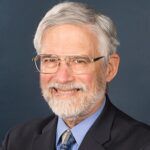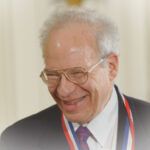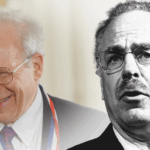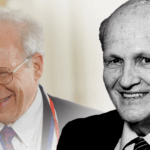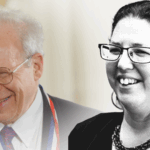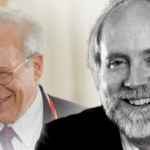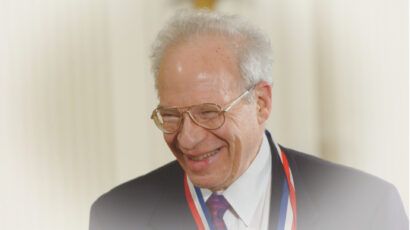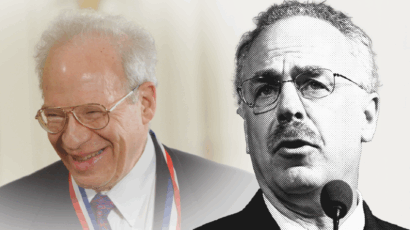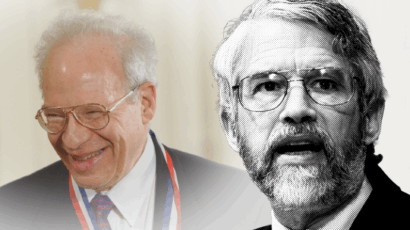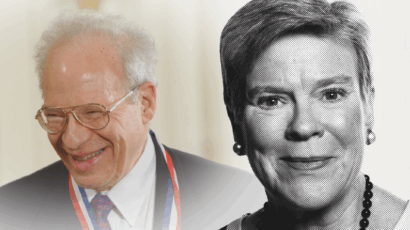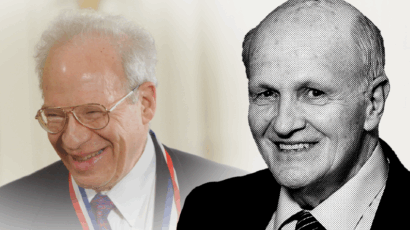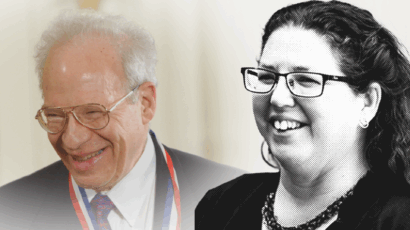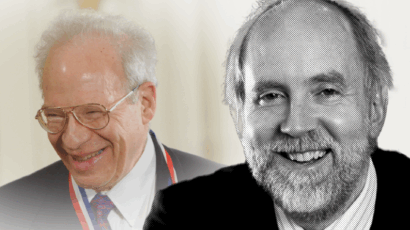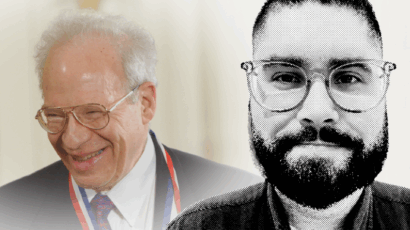Advising national governments: A reminiscence about Dick Garwin
By John P. Holdren | May 23, 2025
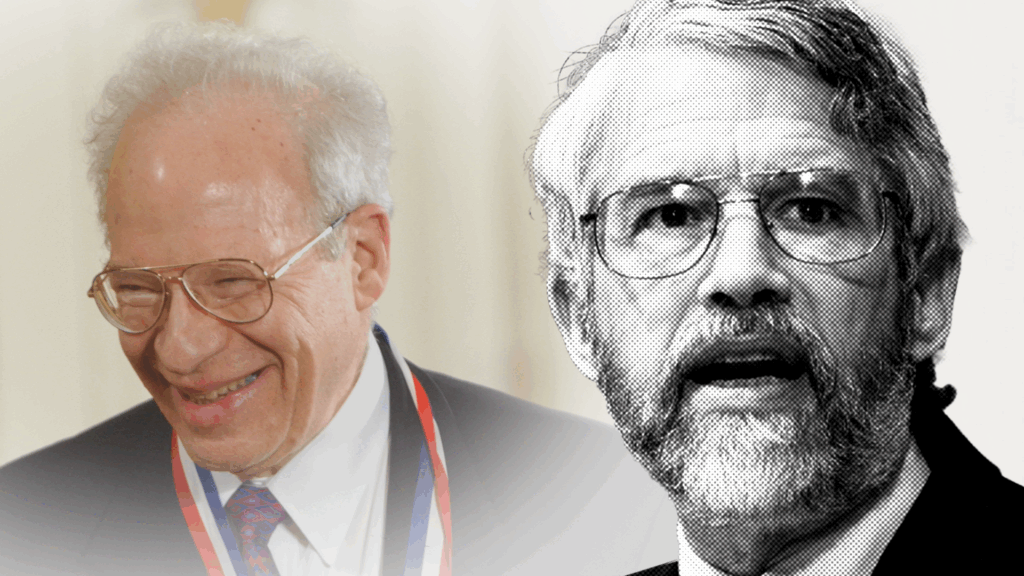
Editor’s note: This essay is part of a collection of appreciations of Dick Garwin.
Dick Garwin was not only a uniquely capable scientist, engineer, and inventor; he was also an exceptionally prolific and influential advisor to multiple national governments at the highest levels. He was the most diversely creative scientist-technologist I ever met. Dick was also, in both his technical career and his work in advising governments, the most relentlessly candid; he never sugar-coated anything for anybody. The recipients of his advice did not always love it, but they knew it was unvarnished and virtually certain to be technically solid.
As I recall, I first met Dick in 1981 at the annual meeting of the Pugwash Conferences on Science and World Affairs. We hit it off and interacted frequently after that, including at many subsequent Pugwash meetings, in meetings on science and public policy, in a variety of advisory capacities to the US government, and in forays offering (often unwanted) advice on arms control to defense establishments of Russia, China, and India.
The Pugwash Conferences were initiated in 1957 to provide an invitation-only, unofficial venue where eminent scientists (and soon, senior public figures) could discuss ways to reduce the risks from nuclear weapons and other science and security issues. The meetings were—and still are—hosted in rotation by nations East and West and North and South; they are closed to the public and the press, but with a report of findings made public afterwards.
The participation of numbers of senior advisors to the US and Soviet governments was a feature of Pugwash meetings from the beginning, with both sides reporting key conclusions of the meetings to their national leaders afterwards. Dick attended his first Pugwash meeting in 1967, I my first in 1973. The Pugwash organization shared the 1995 Nobel Peace Prize with one of its founders, Josef Rotblat.
What struck me immediately about Dick’s role in Pugwash meetings was the extraordinary respect the most senior participants on all sides gave to his interventions. When Dick made a statement about the technical realities around an issue, it was generally taken as definitive on that topic. If, after hearing someone else’s presentation, he commented “I didn’t understand your argument”, all present (usually including the presenter) knew this meant the argument had not made sense to the smartest person in the room.
Dick’s other engagements at the intersection of science and policy around matters of national security and national intelligence were extremely diverse. They included serving as a consultant to the President’s Science Advisory Committee (PSAC) under President Eisenhower, and subsequently as PSAC member under Presidents Kennedy, Johnson, and Nixon; a member on the Defense Science Board of the Defense Department under Presidents Johnson and Nixon; chairman of the Arms Control and Nonproliferation Advisory Board of the State Department; and even serving (for longer than anybody else) on the low-profile but influential JASON science advisory group of the US government.
Let me turn to a couple of Dick’s top-level policy-advising roles in the Clinton and Obama years for which I had a front-row seat.
One of these roles was in Dick’s capacity as a member of the National Academy of Sciences’ Committee on International Security and Arms Control (CISAC).[1] CISAC had been established in 1980 to provide a forum for back-channel, bilateral discussions between a group of top US experts in defense science, technology, and policy and a similarly constituted group under the auspices of the Soviet Academy of Sciences. (The committee’s mandate expanded in 1988 to include analogous bilateral interactions with Chinese experts and in 1999 to do the same with an Indian counterpart group.) Dick was a key member of CISAC from its inception through 2023, thereafter continuing to take part in its Russian dialogues until his passing.
My first-hand experience of Dick’s contributions to CISAC began in 1993 when I joined the committee; it lasted until 2005 when I stepped down after 11 years as its chair. The most important reports produced by CISAC in that period were the two volumes on management and disposition of surplus weapon plutonium, released in 1994 and 1995, and a volume on the future of US nuclear weapon policy, released in 1997. Dick had an immense influence on both studies, which received a considerable amount of attention in the White House, the Defense Department, and the Energy Department. And Dick’s role extended to being an energetic advocate of the findings with his extensive network of contacts among top officials and their science advisors not just in the United States but in France, the United Kingdom, Russia, and China.
President Clinton, for whom I was serving from 1994 until 2001 as a member of the President’s Council of Advisors on Science and Technology, responded to the CISAC’s plutonium findings by making me the chair, on the US side, of a bilateral presidential commission reporting to him and President Yeltsin on whether US and Russian positions on the management of surplus weapon plutonium could be reconciled. (The chair on the Russian side was Evgeny Velikhov, who was Yeltsin’s science advisor and a long-time collaborator with me and Dick through Pugwash, CISAC, and more.) I promptly recruited Dick to be one of the five US participants. His deep expertise and credibility with the Russians were instrumental in the two sides’ reaching an agreement in June 1997 on eight of the nine points at issue.
In the Obama administration—through all of which I served as the President’s science advisor and the director of the White House Office of Science and Technology Policy (OSTP)—Dick offered to serve as a pro bono consultant to me and OSTP. He spent every other Friday at OSTP, offering us the benefit of his unparalleled experience on security and intelligence matters and his utterly extraordinary technical skills. My colleagues and I saved up, for his visits on alternate Fridays, the subset of the science and technology questions arising in OSTP in the preceding two weeks that no one we could find in or out of government could answer. Dick typically answered all of them in an afternoon.
For reasons of space, I have left out a lot. But this last example of Dick’s amazing combination of unequalled competence in science and technology and tireless devotion to applying that talent to public service may be a good place to stop.
Notes
[1] The National Academy of Sciences’ Committee on International Security and Arms Control is distinct from Stanford University’s Center for International Security and Cooperation, both shortened to CISAC.
Together, we make the world safer.
The Bulletin elevates expert voices above the noise. But as an independent nonprofit organization, our operations depend on the support of readers like you. Help us continue to deliver quality journalism that holds leaders accountable. Your support of our work at any level is important. In return, we promise our coverage will be understandable, influential, vigilant, solution-oriented, and fair-minded. Together we can make a difference.
